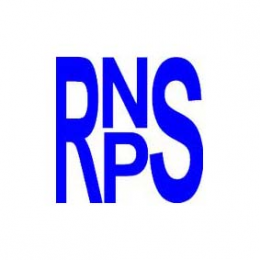Level of nomophobia in Cuban university students
Abstract
Introduction: Nomophobia defines the feeling of nervousness, discomfort, anxiety or irrational fear for not having a cell phone or a computer in a given time. It has been studied in various countries showing worrying levels in terms of prevalence and risk of suffering from it.
Objective: To analyze the negative influence of the use of Smartphones and the Internet on Medical Sciences students, applying the Spanish version of the International Nomophobia Questionnaire.
Methods: Non-observational descriptive cross-sectional research was carried out in Cuban medical science students, in the period between July and August 2021. With a sample of 713 university students. The 20-question questionnaire was applied through Google Forms.
Results: It was possible to gather criteria from all the provinces of the country, the Eastern region was the most represented. Females represented the majority (70.8%). For the nomophobia criteria, the results prevailed for the moderate degree (51.5%); only 6.9% of the participants manifested severe nomophobia. The correlation between experience in using mobile phones and levels of nomophobia was evaluated.
Conclusions: The excessive use of the Smartphone has gradually acquired epidemiological importance; it was found that as the years of use increase, the level is directly proportional, conditioned, mainly, to its role in daily activities. The entire sample demonstrated some degree of nomophobia, so this is not an absent secess in our society.
DeCS: TECHNOLOGY ADDICTION; INTERNET ADDICTION DISORDER; SMARTPHONE; PROBLEM BEHAVIOR; ADOLESCENT BEHAVIOR.
Downloads
References
2. Aiquipa Moreno EC, Álvarez Reyna M. Revisión Sistemática y Metaanálisis de las Propiedades Psicométricas del Cuestionario de Nomofobia NMP-Q en Adolescentes y Jóvenes entre el 2014-2020 [tesis]. Lima: Universidad de Cesar Vallejo; 2021 [citado 15 Sep 2022]. Disponible en: https://repositorio.ucv.edu.pe/bitstream/handle/20.500.12692/58832/Aiquipa_MEC-Alvarez_RMC-SD.pdf?sequence=1&isAllowed=y
3. León-Mejía AC, Gutiérrez-Ortega M, Serrano-Pintado I, González-Cabrera J. A systematic review on nomophobia prevalence: Surfacing results and standard guidelines for future research. PLoS ONE [Internet]. 2021 May [citado 15 Sep 2022];16(5):e0250509. Disponible en: https://journals.plos.org/plosone/article?id=10.1371/journal.pone.0250509
4. León-Mejía A, Calvete E, Patino-Alonso C, Machimbarrena JM, González-Cabrera J. Cuestionario de Nomofobia (NMP-Q): Estructura factorial y puntos de corte de la versión española. Adicciones [Internet]. 2021 [citado 10 Sep 2022];33(2). Disponible en: https://www.adicciones.es/index.php/adicciones/article/viewFile/1316/1089
5. Cruz Carrazana CE, García Carrazana C, Vázquez Carvajal L. Smartphone, la antesala del síndrome de Text-neck. Scalpelo [Internet]. 2021 Ene-Abr [citado 10 Sep 2022];2(1). Disponible en: https://rescalpelo.sld.cu/index.php/scalpelo/article/view/71/pdf
6. Olmedo Hernández IJ, Denis Rodríguez E, Barradas Alarcón ME, Villegas Domínguez JE, Denis Rodríguez PB. Agresividad y conducta antisocial en individuos con dependencia al teléfono móvil: un posible factor criminogénico. Horiz Med [Internet]. 2019 [citado 27 Jul 2022];19(3). Disponible en: https://www.horizontemedico.usmp.edu.pe/index.php/horizontemed/article/view/1069/657
7. González-Cabrera J, León-Mejía A, Pérez-Sancho C, Calvete E. Adaptación al español del cuestionario Nomophobia Questionnaire (NMP-Q) en una muestra de adolescentes. Actas Esp Psiquiatr [Internet]. 2017 [citado 10 Sep 2022];45(4):137-144. Disponible en: https://www.actaspsiquiatria.es/repositorio/19/108/ESP/19-108-ESP-137-44-401770.pdf
8. Matoza-Báez CM, Carballo-Ramírez MS. Nivel de nomofobia en estudiantes de Medicina de Paraguay, año 2015. CIMEL [Internet]. 2016 [citado 21 Ago 2022];21(1). Disponible en: https://www.cimel.felsocem.net/index.php/CIMEL/article/view/624
9. Ramos-Soler I, López-Sánchez C, Quiles-Soler MC. Adaptación y validación de la escala de nomofobia de Yildirim y Correia en estudiantes españoles de la educación secundaria obligatoria. Health and Addictions/Salud y Drogas [Internet]. 2017 [citado 01 Sep 2022];17(2):201-13. Disponible en: https://ojs.haaj.org/?journal=haaj&page=article&op=view&path%5B%5D=332
10. Essel HB, Vlachopoulos D, Tachie-Menson A. The relationship between the nomophobic levels of higher education students in Ghana and academic achievement. PLoS ONE [Internet]. 2021 [citado 15 Sep 2022];16(6):e0252880. Disponible en: https://www.ncbi.nlm.nih.gov/pmc/articles/PMC8208529/
11. Qutishat M, Lazarus ER, Razmy M, Packianathan S. University students’ nomophobia prevalence, sociodemographic factors and relationship with academic performance at a University in Oman. Int J Africa Nurs Sci [Internet]. 2020 [citado 15 Sep 2022];13:100206. Disponible en: https://www.sciencedirect.com/science/article/pii/S2214139120300834
12. Schwaiger E, Tahir R. Nomophobia and its predictors in undergraduate students of Lahore, Pakistan. Heliyon [Internet]. 2020 Sep [citado 15 Sep 2022];6(9):e04837. Disponible en: https://www.ncbi.nlm.nih.gov/pmc/articles/PMC7486428/
13. Salgado Fuentes CE, Torrecilla Venegas R, Perez Mola K, Zayas Fundora E. Caracterización del tabaquismo en estudiantes de las ciencias médicas de Cuba. Rev cienc méd Pinar Rio [Internet]. 2021 Jul-Ago [citado 14 Sep 2022];25(4). Disponible en: http://scielo.sld.cu/scielo.php?script=sci_arttext&pid=S1561-31942021000400010
14. Magariño-Abreus L, Echevarría-Regojo L, Rivero-Morey RJ, Ramos-Rangel Y. Percepción sobre investigación científica en estudiantes de estomatología. Univ Méd Pinareña [Internet]. 2021 [citado 15 Sep 2022];17(2). Disponible en: https://revgaleno.sld.cu/index.php/ump/article/view/737
15. Lazo Herrera LA. Los dispositivos móviles y las redes sociales en la educación en salud. Univ Méd Pinareña [Internet]. 2019 [citado 15 Sep 2022];15(3). Disponible en: https://revgaleno.sld.cu/index.php/ump/article/view/354/html
16. Osio Flores AM, Yucra Mitma GD, Arroyo Dolz K, Berduguez P, Ramírez Rojas V, Reinaga HY, et al. ¿Es la nomofobia, un problema del siglo XXI? Archivos Bolivianos de Medicina [Internet]. 2014 Jul-Dic [citado 15 Sep 2022];22(90):70. Disponible en: http://www.revistasbolivianas.ciencia.bo/pdf/abm/v22n90/v22n90a10.pdf
17. Yildiz Durak H. Investigation of nomophobia and Smartphone addiction predictors among adolescents in Turkey: Demographic variables and academic performance. Soc Sci J [Internet]. 2019 [citado 15 Sep 2022];56(4):492-517. Disponible en: https://www.tandfonline.com/doi/full/10.1016/j.soscij.2018.09.003
18. Perdomo Barrera I, Perdomo Estrada C. Influencia de las redes sociales en los estudiantes de la Facultad de Estomatología de Santiago de Cuba. UNIMED [Internet]. 2020 [citado 01 Ago 22];2(2). Disponible en: https://revunimed.sld.cu/index.php/revestud/article/view/27
19. Mejia CR, Flores SD, Verastegui-Díaz A, García-Moreno KM, Vargas M, Cárdenas MM, et al. Uso del Smartphone y de Facebook asociado a la autopercepción del rendimiento académico en estudiantes de Medicina peruanos. Rev cuba inf cienc salud [Internet]. 2017 Ene-Mar [citado 12 Ago 2022];28(1). Disponible en: http://scielo.sld.cu/scielo.php?script=sci_arttext&pid=S2307-21132017000100006













